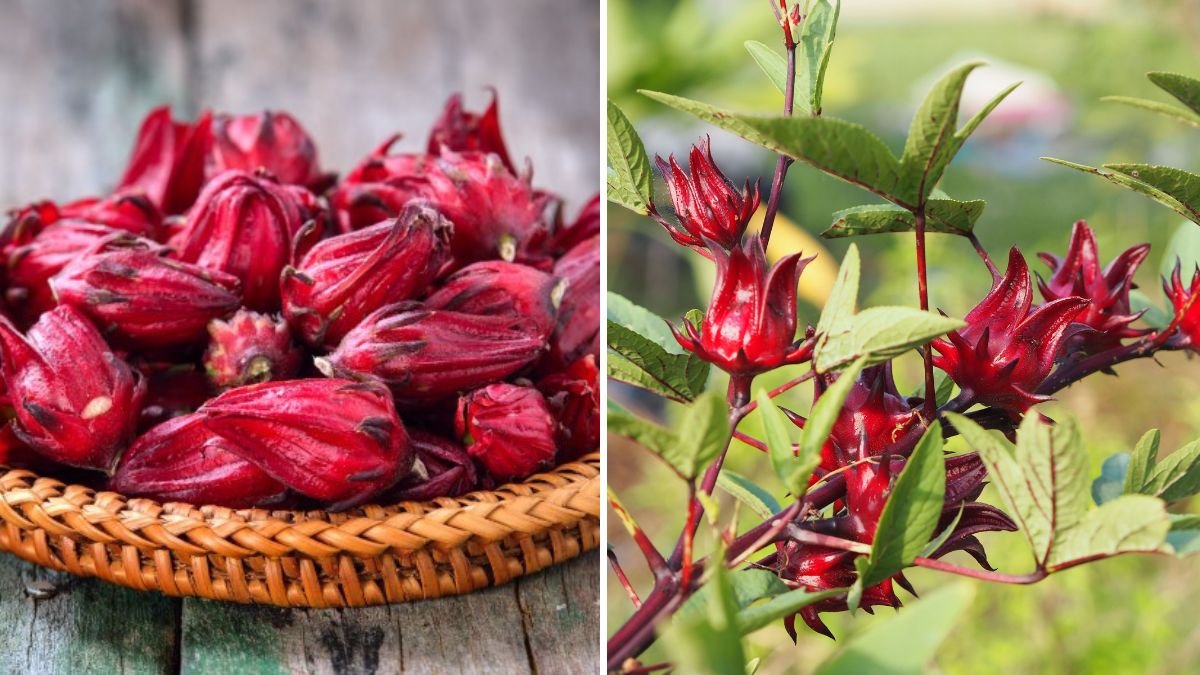If you’ve ever sipped a ruby-red hibiscus tea on a summer afternoon or tasted the tangy kick of Caribbean sorrel punch during the holidays, you’ve likely enjoyed Roselle, also known as sorrel hibiscus (Hibiscus sabdariffa). This stunning tropical plant isn’t just a feast for the eyes—it’s a powerhouse of health benefits, a versatile ingredient in American kitchens, and a rising star in home gardens across the U.S.
From Florida to California, more Americans are discovering the vibrant charm of Roselle. With its cranberry-like flavor, vitamin-packed calyces, and festive red hues, this plant brings together the best of nature’s bounty and culinary creativity. Whether you’re a gardener, home chef, or wellness enthusiast, Roselle has something extraordinary to offer.
In this article, we’ll explore everything about Roselle (sorrel hibiscus)—from its origin and health benefits to growing tips and delicious recipe ideas perfect for your American home.
1. What Is Roselle (Sorrel Hibiscus)?
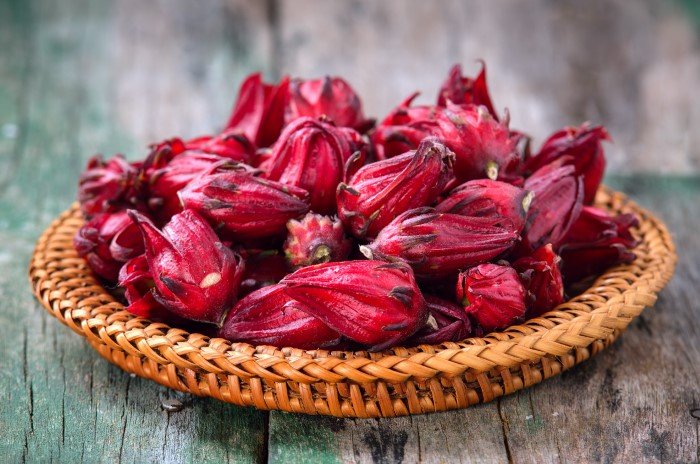
Roselle (Hibiscus sabdariffa) is a tropical plant belonging to the Malvaceae family, the same botanical group as okra and cotton. It’s native to West Africa but has become deeply rooted in Caribbean, Asian, and Latin American cultures. In the United States, Roselle thrives in warm climates like Florida, Texas, Louisiana, and Southern California.
The part most commonly used is the calyx, the bright red, fleshy outer covering of the flower bud that develops after the flower drops. These calyces are dried or used fresh to make teas, jams, sauces, and festive beverages.
Depending on where you are, you may hear Roselle referred to as:
- Sorrel in the Caribbean
- Jamaican Sorrel Drink during Christmas celebrations
- Flor de Jamaica in Mexico
- Bissap in West Africa
No matter the name, one thing remains constant—the plant’s beautiful crimson color and tart, refreshing flavor that’s adored worldwide.
2. The Nutritional Powerhouse: Health Benefits of Roselle
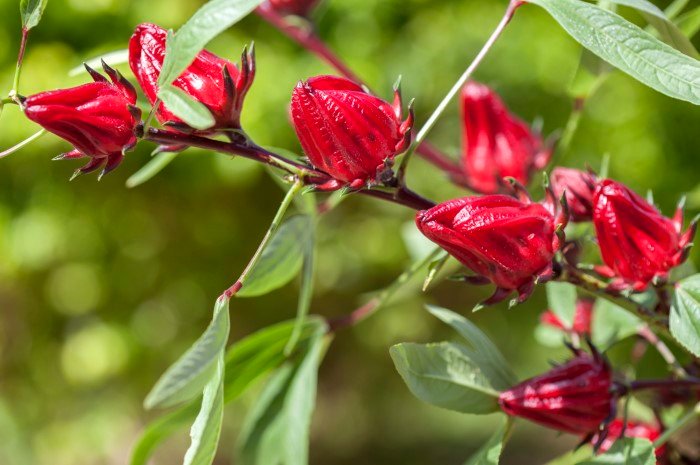
Roselle isn’t just visually stunning; it’s also a superfood loaded with nutrients. Studies show it’s packed with antioxidants, vitamins, and minerals that promote overall well-being. Here are some of its most remarkable health benefits:
a. Supports Heart Health
Roselle tea has been shown to help lower blood pressure and cholesterol levels, making it a heart-healthy choice. Its rich content of anthocyanins and polyphenols supports better blood vessel function and reduces oxidative stress.
b. Boosts Immunity
A single cup of Roselle tea is bursting with vitamin C, which strengthens immunity and helps the body fight seasonal infections. This makes it a perfect wintertime beverage for American households.
c. Aids Weight Management
Low in calories and naturally diuretic, Roselle helps reduce water retention and supports healthy metabolism—ideal for anyone looking to maintain a balanced weight.
d. Improves Digestive Health
Roselle’s mild laxative properties and natural acids assist digestion and promote a healthy gut. Its fiber content also supports regular bowel movements.
e. Natural Detoxifier
The plant’s antioxidant compounds, including flavonoids and hibiscus acid, help flush out toxins and keep the liver functioning efficiently.
In short, Roselle is more than just a pretty plant—it’s a natural wellness ally that fits perfectly into the health-conscious American lifestyle.
3. How to Grow Roselle in Your American Garden
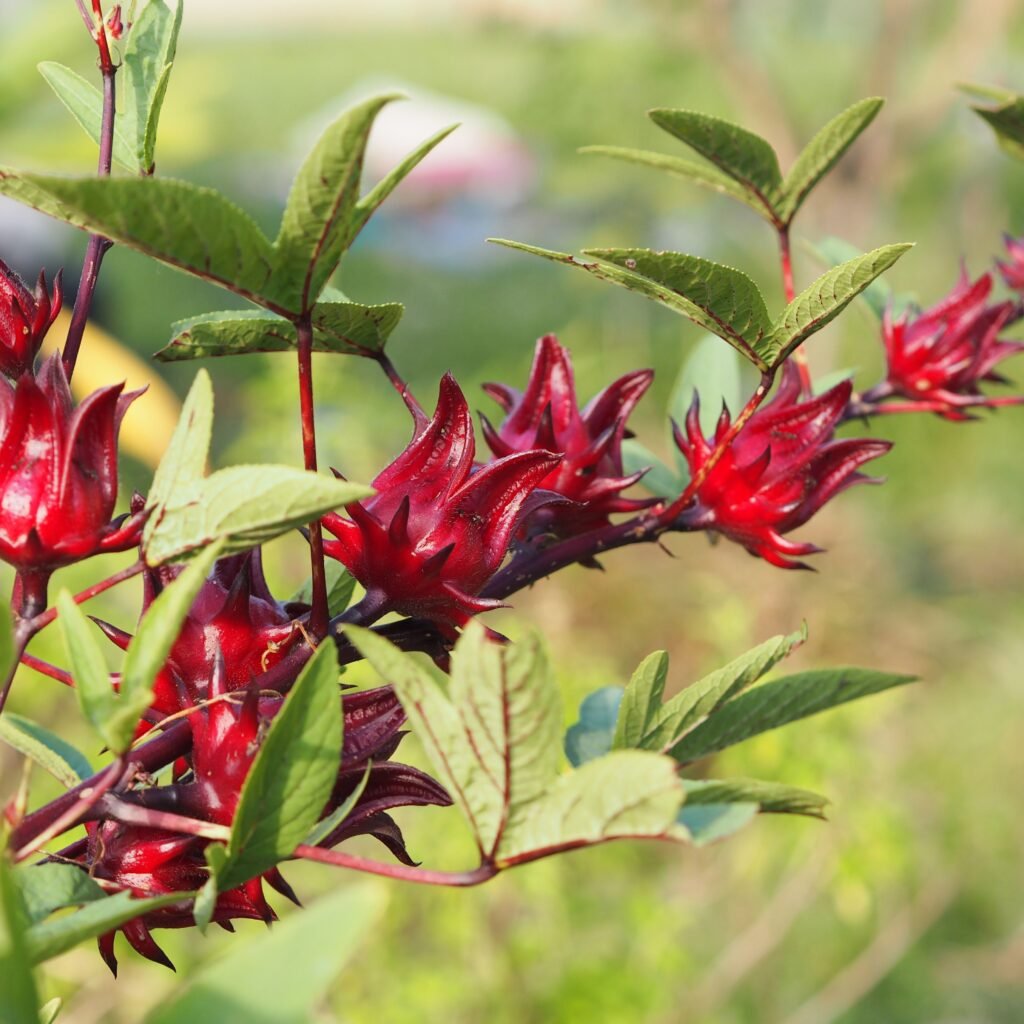
Roselle is an easy-to-grow annual plant that loves warm weather and full sunlight, making it ideal for southern U.S. states. Here’s a simple guide to growing it successfully:
a. Climate and Soil
Roselle thrives in temperatures between 70°F and 90°F. It prefers well-drained, sandy loam soil with a slightly acidic pH (around 5.5 to 6.5). Avoid waterlogged areas, as too much moisture can cause root rot.
b. Planting Time
In most U.S. regions, plant Roselle after the last frost date in spring. In tropical or subtropical areas, it can be grown year-round.
c. Propagation
Start Roselle from seeds. Soak them in warm water overnight before planting to speed up germination. Space plants about 3–4 feet apart since they can grow up to 6–8 feet tall.
d. Care and Maintenance
- Water regularly but avoid soggy soil.
- Use organic compost for rich nutrition.
- Prune early to encourage bushier growth.
- Keep an eye out for pests like aphids or whiteflies.
e. Harvesting
Roselle is ready to harvest around 5–6 months after planting. Once the flowers fade, the red calyces begin to thicken. Harvest them while they’re firm and tender—perfect for cooking or drying.
Tip: The young leaves and shoots are also edible! They add a tangy note to salads or stir-fries.
4. Delicious Ways to Use Roselle in the Kitchen
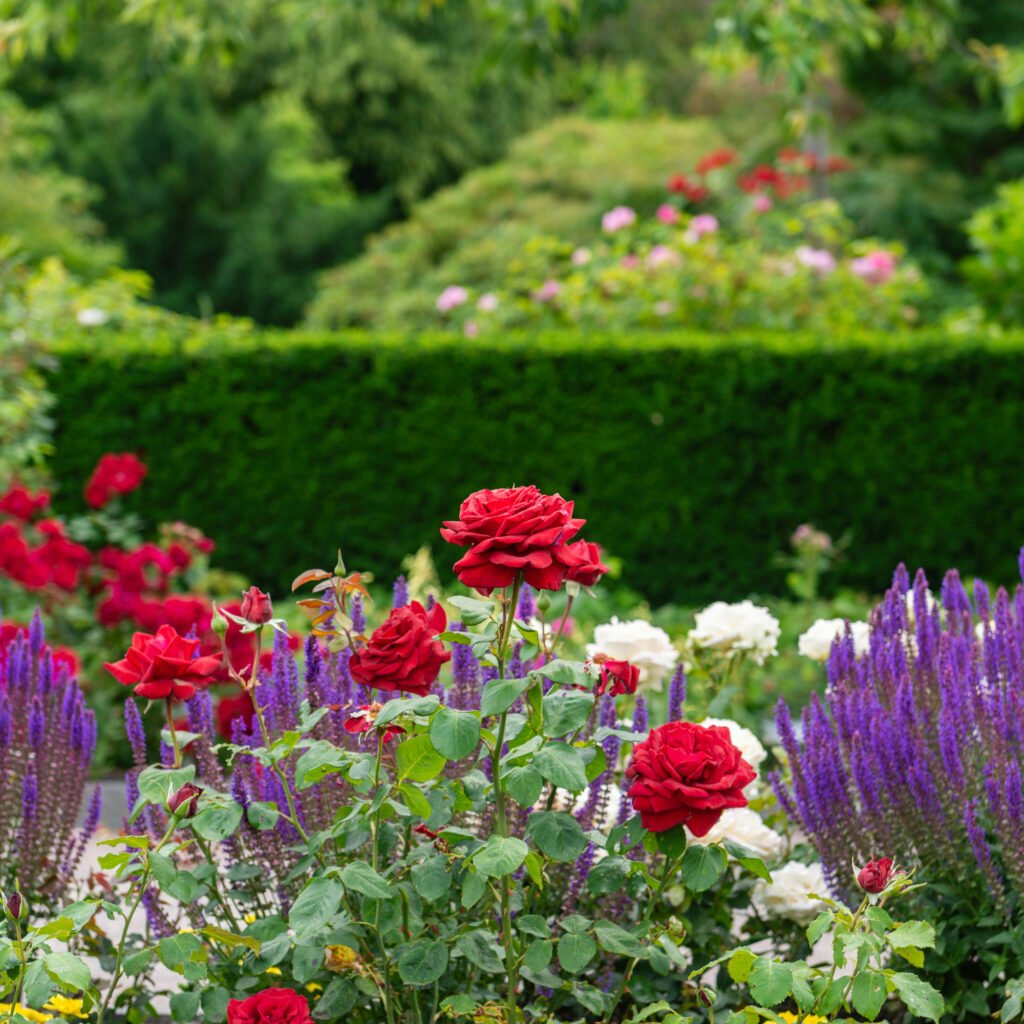
Roselle’s tart, fruity flavor makes it a culinary gem. It can be used in both sweet and savory dishes, adding color and zest to your holiday table or summer picnics. Here are some delicious ways Americans are embracing Roselle:
a. Roselle Tea (Hibiscus Tea)
The most popular use! Steep dried or fresh calyces in hot water for 10–15 minutes. Add honey or agave syrup for sweetness, and chill it with ice and mint for a refreshing summer drink.
b. Jamaican Sorrel Christmas Punch
A Caribbean holiday favorite gaining popularity in the U.S. Combine steeped Roselle with ginger, cinnamon, cloves, and a dash of rum (optional). Serve it cold during Christmas parties—it’s vibrant, spicy, and festive!
c. Roselle Jam or Jelly
Simmer Roselle calyces with sugar and lemon juice to make a tangy jam. It pairs beautifully with toast, pancakes, or cheese boards.
d. Roselle Sauce for Meat and Desserts
Make a reduction sauce using Roselle extract, sugar, and balsamic vinegar. It’s perfect drizzled over roasted chicken, turkey, or even vanilla ice cream.
e. Roselle Chutney
Mix chopped Roselle with onions, chili, and spices for a flavorful chutney. It adds a unique twist to sandwiches or grilled dishes.
f. Roselle Salad Mix
Toss tender Roselle leaves with greens, avocado, and citrus dressing for a zesty, vitamin-rich salad.
With such versatility, Roselle easily earns a spot in modern American kitchens—bridging tropical tradition with contemporary flavor.
5. Roselle in American Culture and Sustainability
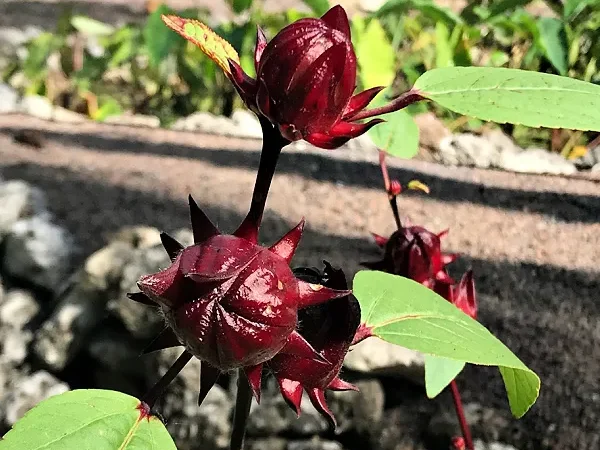
As Americans become more conscious about sustainable living and plant-based diets, Roselle fits perfectly into this growing movement. It’s:
- Eco-friendly: Requires minimal pesticides and thrives in warm climates.
- Versatile: Grown for ornamental beauty, edible leaves, and medicinal uses.
- Zero-waste: Almost every part of the plant is usable—from calyces and leaves to seeds.
Many urban gardeners and homesteaders in Florida, California, and Texas are now cultivating Roselle as part of their farm-to-table lifestyle. Its dual role as an ornamental plant and a nutritional ingredient makes it both practical and beautiful.
Moreover, Roselle’s deep red hues and festive flavor have made it a seasonal favorite in American holiday beverages—especially during Thanksgiving and Christmas. With the rise of artisanal teas, craft cocktails, and organic health products, this “tropical cranberry” is enjoying its well-deserved moment in the spotlight.
6. Fun Facts About Roselle
- The red color in Roselle comes from natural anthocyanins, powerful antioxidants.
- In the U.S. South, Roselle is sometimes called “Florida Cranberry.”
- The seeds can be roasted and used as a caffeine-free coffee substitute.
- Ancient Egyptians prized Roselle for its ability to cool the body in desert heat.
- The plant is featured in traditional remedies for cough, cold, and digestion across Africa and Asia.
7. Final Thoughts: A Red Jewel for Every American Home
Roselle (sorrel hibiscus) is more than just a plant—it’s a celebration of color, flavor, and wellness. Whether you’re brewing a comforting cup of hibiscus tea, decorating your garden with its scarlet blossoms, or preparing a festive sorrel punch for Christmas, Roselle adds a burst of life to every season.
As Americans embrace natural health trends, home gardening, and global flavors, Roselle stands out as the perfect blend of tradition and modern wellness. So, the next time you’re looking for something vibrant to grow or cook, let Roselle bring its tropical charm and crimson cheer to your table—and your heart.
